-
 Bitcoin
Bitcoin $106,754.6083
1.33% -
 Ethereum
Ethereum $2,625.8249
3.80% -
 Tether USDt
Tether USDt $1.0001
-0.03% -
 XRP
XRP $2.1891
1.67% -
 BNB
BNB $654.5220
0.66% -
 Solana
Solana $156.9428
7.28% -
 USDC
USDC $0.9998
0.00% -
 Dogecoin
Dogecoin $0.1780
1.14% -
 TRON
TRON $0.2706
-0.16% -
 Cardano
Cardano $0.6470
2.77% -
 Hyperliquid
Hyperliquid $44.6467
10.24% -
 Sui
Sui $3.1128
3.86% -
 Bitcoin Cash
Bitcoin Cash $455.7646
3.00% -
 Chainlink
Chainlink $13.6858
4.08% -
 UNUS SED LEO
UNUS SED LEO $9.2682
0.21% -
 Avalanche
Avalanche $19.7433
3.79% -
 Stellar
Stellar $0.2616
1.64% -
 Toncoin
Toncoin $3.0222
2.19% -
 Shiba Inu
Shiba Inu $0.0...01220
1.49% -
 Hedera
Hedera $0.1580
2.75% -
 Litecoin
Litecoin $87.4964
2.29% -
 Polkadot
Polkadot $3.8958
3.05% -
 Ethena USDe
Ethena USDe $1.0000
-0.04% -
 Monero
Monero $317.2263
0.26% -
 Bitget Token
Bitget Token $4.5985
1.68% -
 Dai
Dai $0.9999
0.00% -
 Pepe
Pepe $0.0...01140
2.44% -
 Uniswap
Uniswap $7.6065
5.29% -
 Pi
Pi $0.6042
-2.00% -
 Aave
Aave $289.6343
6.02%
What does the divergence between MFI fund flow and price mean?
The Money Flow Index (MFI) helps crypto traders spot potential trend reversals by showing divergences between price and money flow, signaling shifts in market sentiment.
Jun 17, 2025 at 04:42 am
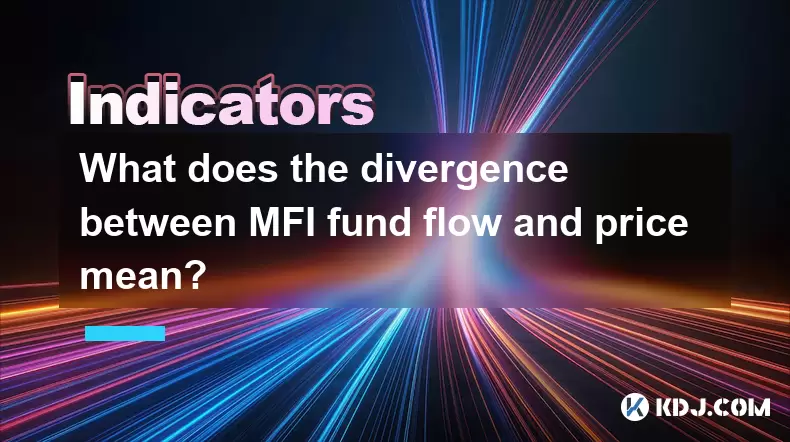
Understanding the MFI Indicator and Its Role in Cryptocurrency Trading
The Money Flow Index (MFI) is a technical analysis tool used to measure the flow of money into or out of an asset over a specified period, typically 14 days. It combines both price and volume data to provide insights into buying and selling pressure. In the cryptocurrency market, where volatility is high and sentiment can shift rapidly, the MFI becomes a critical indicator for gauging potential reversals or continuations in price trends.
When the MFI diverges from the price movement, it signals a possible imbalance between buyers and sellers that may not yet be reflected in the actual price action. This divergence can be either positive (bullish) or negative (bearish), depending on the direction of the price and the direction of the MFI line.
What Is Divergence Between MFI Fund Flow and Price?
Divergence occurs when the price of a cryptocurrency moves in one direction while the MFI moves in the opposite direction. This mismatch suggests that the current trend may be losing momentum and could reverse soon. For example, if the price of a cryptocurrency is rising but the MFI is falling, this indicates weakening buying pressure despite higher prices — a sign of bearish divergence.
Conversely, if the price is falling but the MFI is rising, it means that more capital is flowing into the asset even as prices drop — a sign of bullish divergence. These divergences are especially meaningful in crypto markets due to their speculative nature and frequent emotional trading behavior.
How to Identify MFI and Price Divergence in Crypto Charts
To identify divergence, traders should closely compare the price chart with the MFI oscillator below it. Here's how you can do it step by step:
- Open a crypto charting platform like TradingView or Binance’s native tools.
- Add the MFI indicator to the chart using the default setting of 14 periods unless otherwise customized.
- Look for instances where price highs/lows do not align with MFI highs/lows.
- Draw trendlines on both the price and MFI to visually confirm whether they are moving in sync or diverging.
This comparison allows traders to spot hidden imbalances in market sentiment that may precede significant price moves.
Types of Divergence: Bullish vs Bearish
There are two main types of divergence that occur between the MFI and price:
Bullish Divergence: This happens when the price makes a lower low, but the MFI makes a higher low. It implies that despite falling prices, there is increasing buying pressure and accumulation happening. This often leads to a reversal from a downtrend to an uptrend.
Bearish Divergence: This occurs when the price makes a higher high, but the MFI makes a lower high. It suggests that although prices are going up, fewer investors are willing to buy at these levels, signaling distribution and potential trend reversal to the downside.
Recognizing which type of divergence is occurring helps traders anticipate market moves and adjust positions accordingly.
Practical Examples of MFI and Price Divergence in Crypto Markets
Let’s consider a real-world scenario involving Bitcoin (BTC) during a recent rally phase:
- The price of BTC reaches a new high at $65,000.
- However, the MFI peaks at 80 and then begins to decline while the price continues upward.
- This bearish divergence suggests that despite the price rise, the underlying money flow is weakening — indicating that the rally might be unsustainable.
In another case involving Ethereum (ETH) during a downtrend:
- ETH hits a new low at $2,800.
- Yet, the MFI starts to rise from 20, forming a higher low.
- This bullish divergence hints at growing buying interest even though the price is still dropping, potentially signaling the start of a new bullish phase.
These examples illustrate how divergence can act as an early warning system for traders.
How to Trade Using MFI and Price Divergence Signals
Trading divergence requires patience and confirmation before entering a position. Here are steps to trade effectively:
- Confirm divergence visually using trendlines on both price and MFI.
- Wait for candlestick pattern confirmation such as engulfing candles or pin bars near key support/resistance levels.
- Use volume indicators alongside MFI to validate the strength of the move.
- Set stop-loss orders just beyond the recent swing high or low to manage risk.
- Consider scaling into positions rather than entering all at once to avoid false signals.
Traders must also cross-reference other indicators like RSI or MACD to filter out noise and increase the probability of successful trades.
Frequently Asked Questions
Q: Can MFI divergence occur on any time frame?
A: Yes, MFI divergence can appear on any time frame, from 1-minute charts to weekly charts. However, longer time frames like the 4-hour or daily chart tend to produce more reliable signals due to reduced market noise.
Q: How does MFI differ from RSI in detecting divergence?
A: While both MFI and RSI can detect divergence, MFI incorporates volume, making it more sensitive to changes in money flow. RSI only considers price extremes and may miss subtle shifts in institutional or large-capital movements.
Q: Is MFI divergence always accurate in predicting price reversals?
A: No indicator is 100% accurate. MFI divergence is a strong signal, but it works best when combined with other tools such as trendline analysis, candlestick patterns, and volume confirmation.
Q: Can I use MFI divergence in sideways or ranging markets?
A: Yes, MFI divergence can be particularly useful in range-bound markets where traditional trend-following indicators may struggle. Watch for divergences near support and resistance zones to identify potential breakouts or reversals.
Disclaimer:info@kdj.com
The information provided is not trading advice. kdj.com does not assume any responsibility for any investments made based on the information provided in this article. Cryptocurrencies are highly volatile and it is highly recommended that you invest with caution after thorough research!
If you believe that the content used on this website infringes your copyright, please contact us immediately (info@kdj.com) and we will delete it promptly.
- 2025-W Uncirculated American Gold Eagle and Dr. Vera Rubin Quarter Mark New Products
- 2025-06-13 06:25:13
- Ruvi AI (RVU) Leverages Blockchain and Artificial Intelligence to Disrupt Marketing, Entertainment, and Finance
- 2025-06-13 07:05:12
- H100 Group AB Raises 101 Million SEK (Approximately $10.6 Million) to Bolster Bitcoin Reserves
- 2025-06-13 06:25:13
- Galaxy Digital CEO Mike Novogratz Says Bitcoin Will Replace Gold and Go to $1,000,000
- 2025-06-13 06:45:13
- Trust Wallet Token (TWT) Price Drops 5.7% as RWA Integration Plans Ignite Excitement
- 2025-06-13 06:45:13
- Ethereum (ETH) Is in the Second Phase of a Three-Stage Market Cycle
- 2025-06-13 07:25:13
Related knowledge
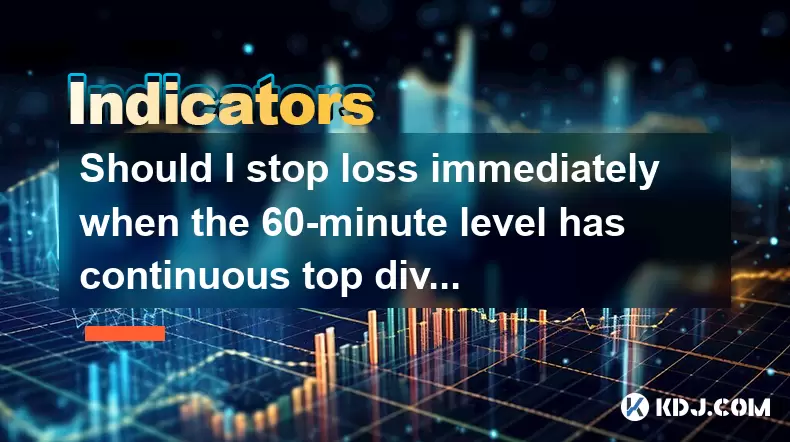
Should I stop loss immediately when the 60-minute level has continuous top divergence?
Jun 17,2025 at 05:28pm
Understanding Top Divergence in the 60-Minute ChartIn cryptocurrency trading, top divergence refers to a technical signal where the price of an asset makes higher highs while the indicator (often RSI or MACD) makes lower lows. This is commonly interpreted as a sign of weakening momentum and potential reversal. When this occurs on the 60-minute chart, it...
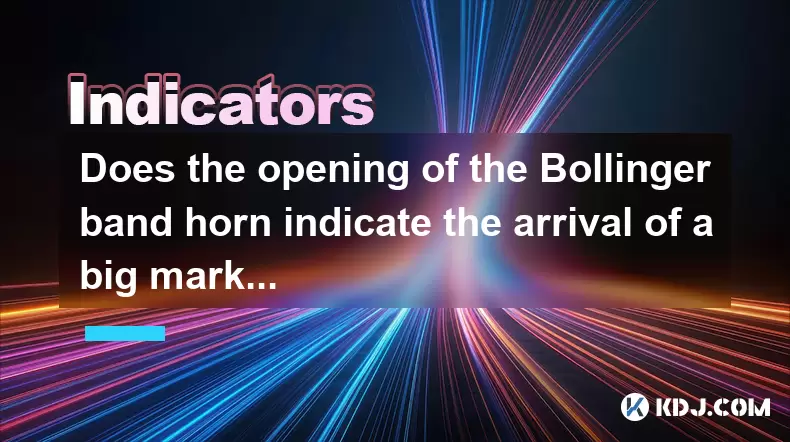
Does the opening of the Bollinger band horn indicate the arrival of a big market?
Jun 17,2025 at 06:28pm
Understanding the Bollinger Bands and Their StructureBollinger Bands are a widely used technical analysis tool in the cryptocurrency market, developed by John Bollinger. They consist of three lines: a simple moving average (SMA), typically set at 20 periods, and two standard deviation bands above and below this SMA. These bands dynamically expand and co...
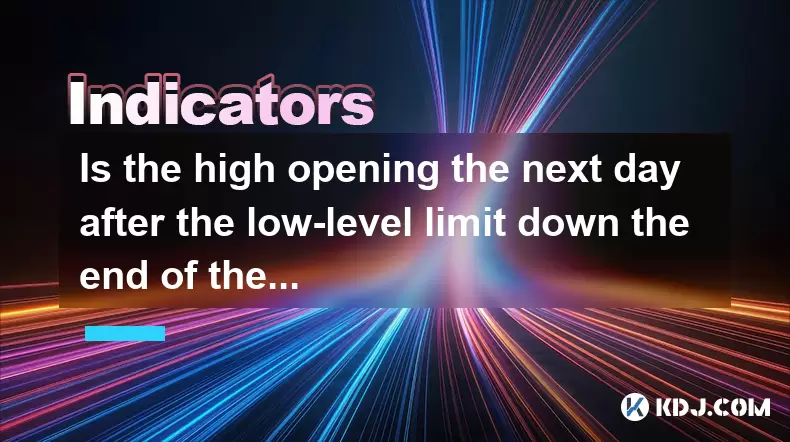
Is the high opening the next day after the low-level limit down the end of the wash?
Jun 17,2025 at 05:57pm
Understanding the Concept of a Limit Down and Its ImplicationsIn the world of cryptocurrency trading, a limit down refers to a situation where the price of a digital asset drops sharply, reaching its maximum allowable decline within a specific time frame. This mechanism is often seen on exchanges that implement daily price limits to prevent excessive vo...
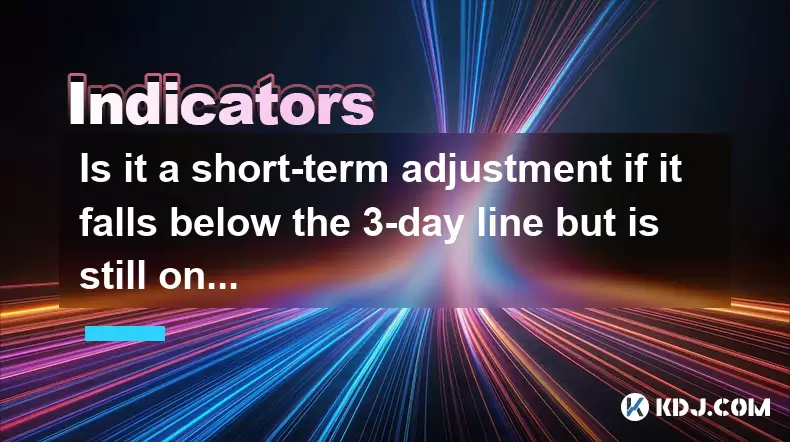
Is it a short-term adjustment if it falls below the 3-day line but is still on the 10-day line?
Jun 17,2025 at 04:07pm
Understanding the 3-Day and 10-Day Moving AveragesIn cryptocurrency trading, moving averages are essential tools for gauging trend strength and potential reversals. The 3-day moving average is a short-term indicator that reflects recent price action with minimal lag, making it highly sensitive to sudden market shifts. In contrast, the 10-day moving aver...
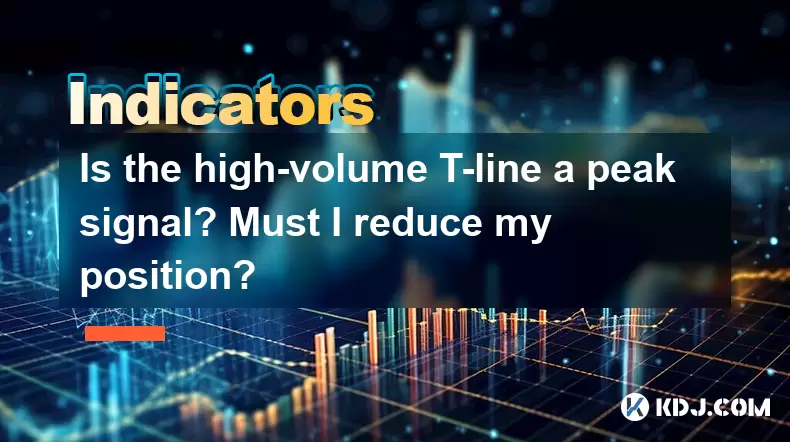
Is the high-volume T-line a peak signal? Must I reduce my position?
Jun 17,2025 at 06:07pm
Understanding the T-Line Pattern in Cryptocurrency TradingIn cryptocurrency trading, technical patterns are frequently used by traders to anticipate price movements. One such pattern is the T-line, which appears on candlestick charts and is characterized by a long upper or lower shadow with little or no body. A high-volume T-line occurs when this patter...
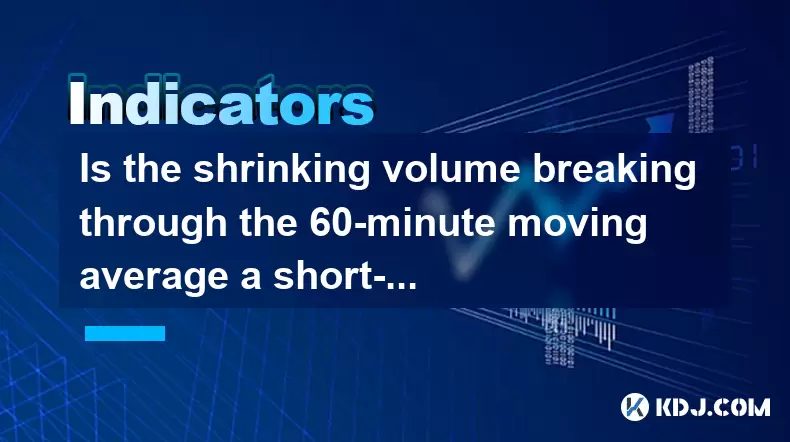
Is the shrinking volume breaking through the 60-minute moving average a short-term weakness? Should I run?
Jun 17,2025 at 06:21pm
Understanding the 60-Minute Moving Average in Cryptocurrency TradingIn cryptocurrency trading, the 60-minute moving average is a popular technical indicator used by traders to assess short-term trends. This metric calculates the average price of an asset over the last 60 minutes and updates with each passing minute. Traders often use it to identify pote...

Should I stop loss immediately when the 60-minute level has continuous top divergence?
Jun 17,2025 at 05:28pm
Understanding Top Divergence in the 60-Minute ChartIn cryptocurrency trading, top divergence refers to a technical signal where the price of an asset makes higher highs while the indicator (often RSI or MACD) makes lower lows. This is commonly interpreted as a sign of weakening momentum and potential reversal. When this occurs on the 60-minute chart, it...

Does the opening of the Bollinger band horn indicate the arrival of a big market?
Jun 17,2025 at 06:28pm
Understanding the Bollinger Bands and Their StructureBollinger Bands are a widely used technical analysis tool in the cryptocurrency market, developed by John Bollinger. They consist of three lines: a simple moving average (SMA), typically set at 20 periods, and two standard deviation bands above and below this SMA. These bands dynamically expand and co...

Is the high opening the next day after the low-level limit down the end of the wash?
Jun 17,2025 at 05:57pm
Understanding the Concept of a Limit Down and Its ImplicationsIn the world of cryptocurrency trading, a limit down refers to a situation where the price of a digital asset drops sharply, reaching its maximum allowable decline within a specific time frame. This mechanism is often seen on exchanges that implement daily price limits to prevent excessive vo...

Is it a short-term adjustment if it falls below the 3-day line but is still on the 10-day line?
Jun 17,2025 at 04:07pm
Understanding the 3-Day and 10-Day Moving AveragesIn cryptocurrency trading, moving averages are essential tools for gauging trend strength and potential reversals. The 3-day moving average is a short-term indicator that reflects recent price action with minimal lag, making it highly sensitive to sudden market shifts. In contrast, the 10-day moving aver...

Is the high-volume T-line a peak signal? Must I reduce my position?
Jun 17,2025 at 06:07pm
Understanding the T-Line Pattern in Cryptocurrency TradingIn cryptocurrency trading, technical patterns are frequently used by traders to anticipate price movements. One such pattern is the T-line, which appears on candlestick charts and is characterized by a long upper or lower shadow with little or no body. A high-volume T-line occurs when this patter...

Is the shrinking volume breaking through the 60-minute moving average a short-term weakness? Should I run?
Jun 17,2025 at 06:21pm
Understanding the 60-Minute Moving Average in Cryptocurrency TradingIn cryptocurrency trading, the 60-minute moving average is a popular technical indicator used by traders to assess short-term trends. This metric calculates the average price of an asset over the last 60 minutes and updates with each passing minute. Traders often use it to identify pote...
See all articles

























































































